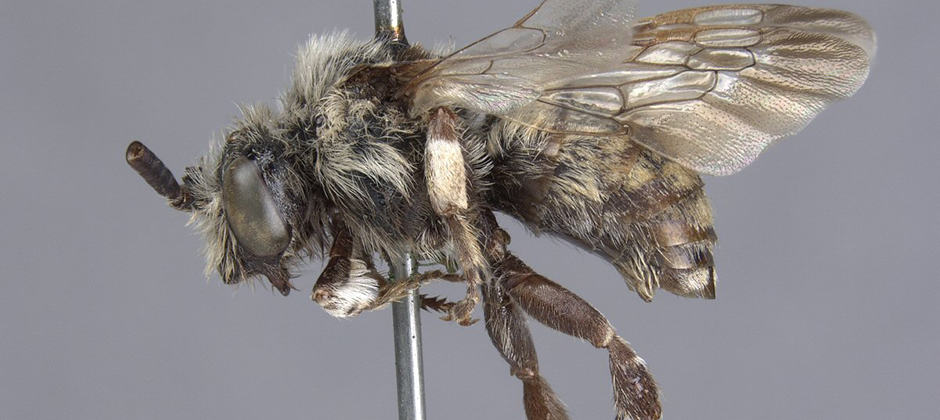Share this article
Researchers resolve mystery bee genus
A bee specimen collected in Nevada presumably in the 1870s sat in the Academy of Natural Sciences of Drexel University for years with researchers unable to determine where it belonged on the bee tree of life. The species was eventually placed in its own genus, named Brachymelecta.
Thomas Onuferko had heard about the bee during his PhD, reading about it in books and chatting about it with his dissertation advisor. “From what I heard, people had been looking for it for years without success—they were unable to find it,” said Onuferko, a research associate at the Canadian Museum of Nature. “Its classification was a complete mystery.”
Even taxonomy experts couldn’t correctly place it. But when Onuferko visited the collection in Philadelphia where the mystery bee is housed, he got to take a closer look. Comparing it to specimens of a known species with identical collection labels housed elsewhere in the collection, a lightbulb went off for Onuferko. Even though the unknown bee had paler hairs and unusual wing venation or vein arrangement, it looked quite similar to the species known as Xeromelecta californica.
“I thought ‘wait a minute,” he said. “Doing side-by-side comparisons, I think this is just a weird specimen of a rather common species.”
Onuferko led a study published in the European Journal of Taxonomy where he and his colleagues studied the specimen and determined it was, in fact, the same species.

Collection and identification associated with the mystery bee, including the original label on the top right.
Credit: Thomas Onuferko, Canadian Museum of Nature
Onuferko said the variation in the characteristics—like paler hairs or different number of submarginal cells on the fore wings—are occasionally observed in this and other species. A specimen from New Mexico in the collection at York University also had pale hairs on its entire abdomen, resembling the older specimen in the Philadelphia collection.
Through DNA barcoding, the team determined the specimen at York was in fact Xeromelecta californica. Onuferko and his colleagues concluded these specimens exhibited a form of partial albinism.
“It’s an interesting story and personally satisfying to solve a puzzle that deceived some of the great experts on bee taxonomy for decades,” Onuferko said.
The bee species Xeromelecta californica went on to take the genus name of the previously unknown specimen—Brachymelecta—because priority goes to the earliest genus name. Thus, the rest of the species previously in Xeromelecta are now placed in the genus Brachymelecta.
Changes like this are important when it comes to all wildlife classification and taxonomy, Onuferko said. “One of the things I try to tell people about taxonomy is, it’s not just about describing new species and publishing new names,” he said. “It’s also about getting rid of redundant ones and redefining how we understand the meaning of each species.”
An important aspect of taxonomic work is searching through existing collections, Onuferko said. In this case, the discovery of a series of specimens that was presumably overlooked by previous researchers in the same institution as the mystery specimen enabled he and his colleagues to resolve its taxonomic status. Resolving taxonomic issues is necessary when it comes to effective policy, management and conservation.
Header Image:
The mystery bee above is now understood to be an aberrant specimen of Brachymelecta californica.
Credit: Thomas Onuferko, Canadian Museum of Nature








